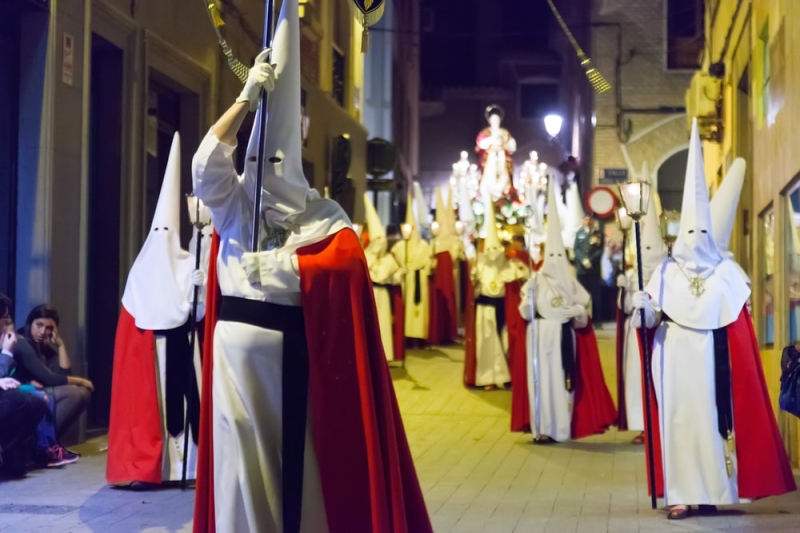
The week between Catholic Palm Sunday and Easter (this year from March 25 to April 1) in Spain is called Semana Santa. And this is one of those folk holidays when the whole country seems to be transported back in time: city centers are closed to traffic, and processions with huge religious sculptures, musicians and robed members of religious fraternities pass through the streets. But it is worth noting that this is not a religious, but a folk holiday, with an abundance of flowers, colors, music and fun, with Andalusian saetas songs and loud applause following the processions.
Locals decorate their houses and wear traditional costumes, and special dishes appear in restaurants. Semanu Santa is celebrated on the greatest scale in the Andalusia region, in the cities of Seville and Malaga. We will tell you about how the Semana Santa takes place in Malaga, where the magnificent processions are not inferior to those in Seville, but there are many times fewer tourists.
The Story of Semana Santa
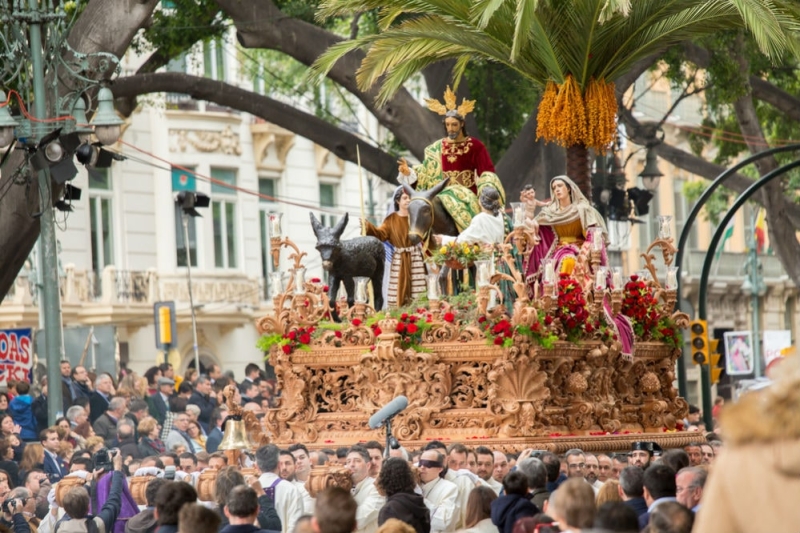
Photo: BigKnell/Shutterstock.com
When Spain was finally freed from Muslim rule in 1492, it caused a strong religious upsurge. Temples and monasteries began to be built everywhere. To protect the Catholic faith, a church court was established – the Inquisition, and in many regions of the country religious holidays began to be celebrated with unprecedented pomp and scope. This is what happened with Semana Santa – the first mentions of processions appear in the 15th century, and at the end of the 16th century the holiday takes on its current form.
The main events of Semana Santa are hours-long processions with orchestras, hundreds of porters carrying pasos on their shoulders (huge wooden sculptures of Jesus, Mary and saints mounted on platforms),
who are accompanied by thousands of nazarenos (fraternity members dressed in multi-colored robes and caps that cover their faces, who repent of their sins without being recognized).
Fraternities and religious symbols of Semana Santa in Malaga
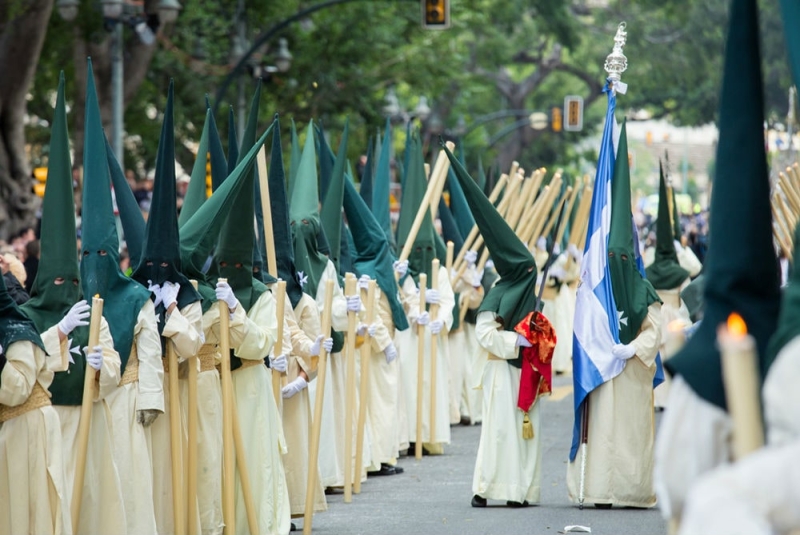
Photo: BigKnell/Shutterstock.com
There are dozens of religious brotherhoods in Malaga. The most respected and influential of them arose in the 15th century. Before the procession begins, members of the brotherhood gather in the church, solemnly carry out the sculptures on stretchers and set off through the city streets to the music. Most Semana Santa processions in Malaga start on Alameda Principal Avenue and follow a pre-established route through Granada Street. Despite the fact that the holiday lasts only a week, each brotherhood carefully prepares for it several months in advance.
Pasos or tronos (religious ornate sculptures standing on wooden platforms) are considered religious symbols of Semana Santa. Each brotherhood has its own revered sculpture, which is carried on the shoulders at the very beginning of the procession. Due to the fact that some pasos weigh more than a ton, it requires between 100 and 300 people to move it. The most solemn moment of the ceremony is the removal of the sculpture from the church, where it is permanently kept, to the music of several orchestras and the screams of the audience.
Schedule of Semana Santa processions in Malaga by day
1. Palm Sunday (Domingo de Ramos)
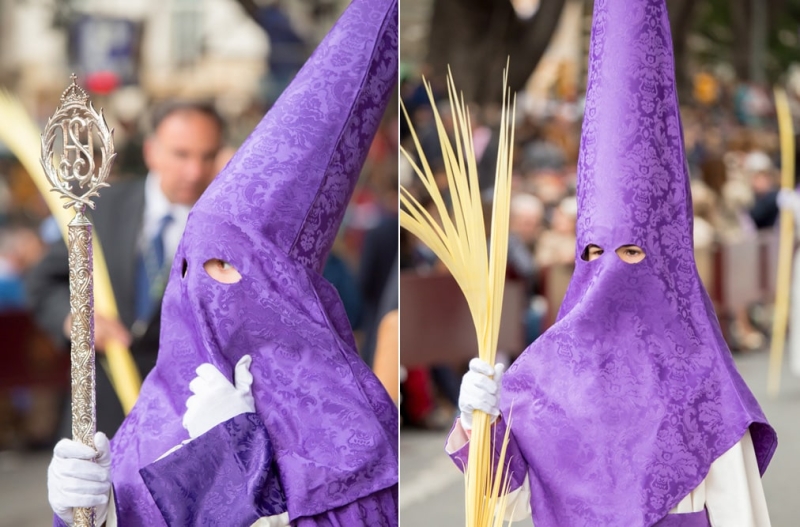
Photo: BigKnell/Shutterstock.com
The morning procession of the Pollinica brotherhood, in which hundreds of children participate, is the main event of Palm Sunday. In the afternoon the procession of the Hermandad de la Salud (Brotherhood of Health) will begin,
whose members are known for carrying their pasos out of church on their knees. And the most memorable will be the procession of Hermandad del Prendimiento (Brotherhood of the Redemption),
which will start at 16.45 and will go to music through the narrow streets of the Old Town until almost midnight.
2. Holy Monday (Lunes Santo)
On this day, one of the most revered pasos in the city, El Cautivo (The Captive), takes part in the procession,
depicting the risen Christ. He is also often called señor de Málaga (master of Malaga). The removal of this pasos from the Barrio de la Trinidad involves not only members of the brotherhood, but also the Malaga military. During the procession, thousands of spectators throw white and red carnations at the statue and the procession participants. This procession is one of the most crowded, solemn and musical in Malaga.
Another interesting Monday procession is El Cristo de los Gitanos (Gypsy Christ),
it begins with the removal of the statue from the church of l’Iglesia de los Mártires in the very center of Malaga, accompanied by the songs of a gypsy choir and the music of an orchestra.
3. Holy Tuesday (Martes Santo)
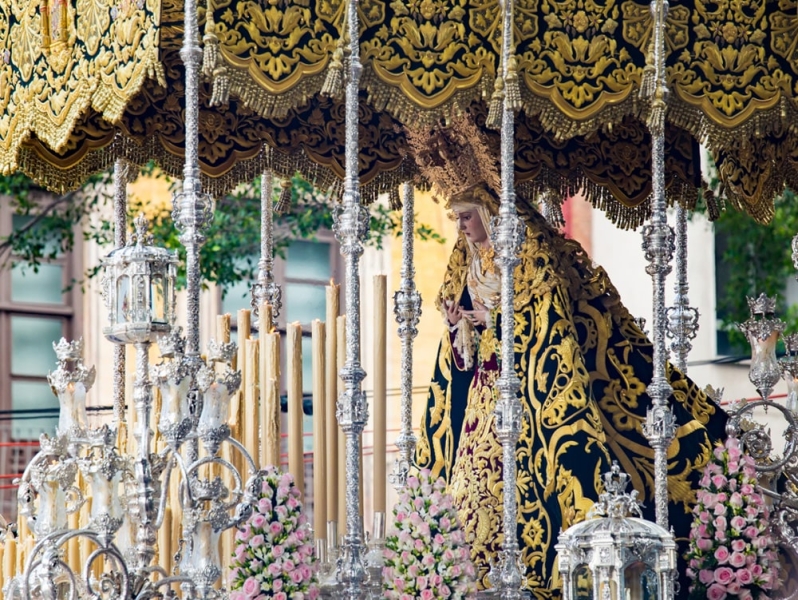
Photo: BigKnell/Shutterstock.com
On Tuesday, processions pass through the Barrio de la Victoria and involve all the brotherhoods whose churches are located in this area: the Rocio brotherhood, all of whose members wear white clothes, and the Jesús de El Rescate brotherhood, which famous for its robes of bright colors. The third interesting procession of this day is the procession of the Virgen de las Penas brotherhood, which begins with the fact that a mantle of fresh flowers is put on the statue of the Virgin Mary and carried through the streets.
4. Holy Wednesday (Miércoles Santo)
On this day, a procession of the most famous and influential brotherhood of Malaga – Cofradía de Fusionadas – goes through the city. This brotherhood has not one, but four huge statues on lavishly decorated litters, carried by more than five hundred porters. The whole city gathers to watch this procession.
Further in the Capuchinos area, members of the Hermandad de los Salesianos brotherhood carry out a pasos called la Paloma (The Dove). This pasos is the heaviest in Malaga, it is carried by 290 porters.
Another important event on Wednesday was the release of a prisoner from prison, who will have to go through the entire procession barefoot, carrying a cross next to the pasos of the El Rico procession.
5. Holy Thursday (Jueves Santo)
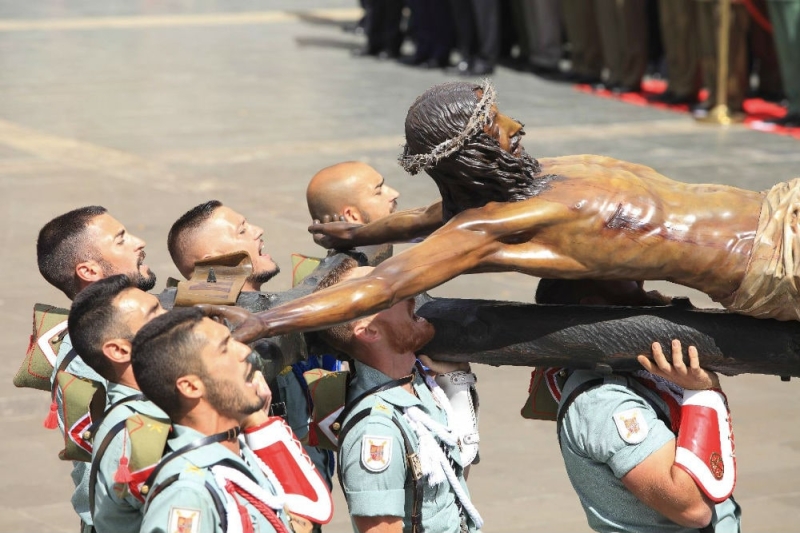
Photo: JLOrtin/Shutterstock.com
On Thursday there will be processions of the Mena and Misericordia brotherhoods.
The day will begin in the port of Malaga, where early in the morning thousands of people will gather to watch the ceremonial landing of the troops of the Spanish Legion, who will carry the Cristo de la Buena Muerte ashore on their shoulders.
6. Holy Friday (Viernes Santo)
Friday is called the Day of Silence, when believers call on everyone to honor the death of Christ with silence. The only procession moving through the streets on this day, the Cristo del Santo Sepulcro, passes in absolute silence, to the sounds of a funeral march. The pasos of the Cristo del Santo Sepulcro brotherhood is famous for being the smallest sculpture of all that participate in Semana Santa.
7. Holy Saturday (Domingo Santo)
Saturday is the most fun and noisy day of Semana Santa. Members of all fraternities participate in the huge procession. At the head of the procession is the brotherhood of the Cofradia del Resucitado, carrying the pasos el Resucitado (pasos of the risen Christ). The processions end close to midnight, when the faithful go to Easter Mass, after which the whole city celebrates Easter.
Preview photo: Iakov Filimonov/Shutterstock.com
To book hotels around the world, use OneTwoTrip.

